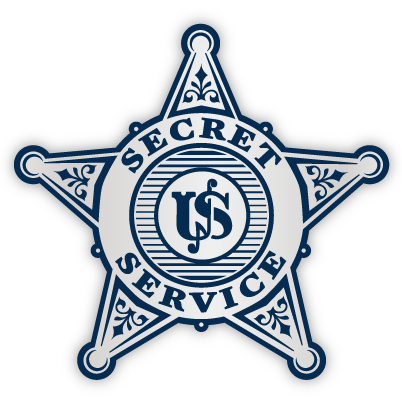- Overview completed
- Protective Operations
- Investigative Operationsnot completed
- Mission Supportnot completed
- Trainingnot completed
Step 2 of 5 Sections
FY2020 Protective Operations
The Secret Service provides physical protection for the President and Vice President of the United States; their families; presidential and vice presidential candidates; former Presidents and First Ladies; several high-level Administration officials; visiting foreign dignitaries; and designated National Special Security Events (NSSEs).
With fewer than 8,000 personnel in FY 2020, the Secret Service conducted protectee visits to more than 4,000 domestic travel locations and 185 international travel destinations from Afghanistan to Vietnam.
The pace and procedures for operations this year, set against a global pandemic, amongst volatile protests and demonstrations on the perimeters of the White House, as well as during a presidential campaign year, proved to be a unique challenge which the Secret Service overcame with resilience. Within the last year, the Secret Service increased the number of its permanent protectees to 41, which included initiating the temporary protective coverage for four presidential campaign candidates and their spouses.
In addition to regular travel locations and visits, the Secret Service also coordinated security for three NSSEs: the 2020 State of the Union Address, the 2020 Democratic National Convention in Milwaukee, and the 2020 Republican National Convention in Charlotte.
Fully Armored Vehicle Upgrades
In FY 2020, the Secret Service joined with government partners to develop the next generation of fully armored vehicle (FAV)platforms. The partnership will result in cost savings through a combined development effort, economies of scale, and maximizing the usage of common original equipment manufacturer parts. This research and development effort will deliver a modern, upgraded design that will serve as the foundation for the next generation of safe and reliable transportation for Secret Service protectees.
Protection of People and Facilities
Special Agents, Uniformed Division Officers, and Technical Law Enforcement personnel provide an around-the-clock operational footprint devoted to the safeguarding of our protectees. In an evolving threat environment, this protective effort requires personnel and technological resources drawn from across the Secret Service.
Operational personnel conduct protective security surveys and numerous special projects in support of presidential and First Family protection. Technical Security Specialists ensure that the Secret Service deploys cutting-edge technology and capabilities to meet any threat directed at world leaders and their families. Upgrades to protective technology assets, including the enhanced Fully Armored Vehicle Program, provide an augmented security profile to our protectees.
In addition to people, the Secret Service also protects facilities and venues secured for its protectees. Throughout its history, the Uniformed Division has accomplished this mission through a tradition of honor, integrity, and a commitment to excellence. Today, the Uniformed Division has grown both in size and scope of responsibility and is mandated by law to provide physical security for the White House Complex and the Vice President’s Residence at the Naval Observatory. The Officers also provide security and police services for foreign diplomatic missions in Washington, D.C.
White House Mail Screening Facility
The White House Mail Screening Facility receives mail from the United States Postal Service and commercial carriers, screening these items for chemical, biological, radiological, nuclear, and explosive hazards to ensure material sent to Secret Service protectees is safe. In FY 2020, the Facility processed 2.2 million pieces of mail that were sent for delivery to the White House Complex and the residences of protectees.
At the end of FY 2020, the White House Mail Screening Facility successfully detected and mitigated a letter laced with the poison ricin. The Secret Service team’s coordinated response ensured the health and safety of all Mail Screening Facility personnel and prevented a serious attack on White House protectees.
Protection and COVID-19
In FY 2020, the Secret Service also implemented COVID-19 mitigation, screening, and testing at our protective sites to maintain a safe work environment for our personnel and protectees. This response included the timely issuance of personal protective equipment (PPE) as a front line defense and strong coordination with the White House Military Office and the White House Medical Unit to institute appropriate procedures.
As a result, the Secret Service continued its success in executing its zero-failure global protective mission. Despite its size, the Secret Service innovatively deployed resources to successfully meet growing operational demands, which in FY 2020 included protecting a historically high number of protectees.
Trailblazers in the Secret Service
On September 15, 1970, Phyllis Shantz was sworn in as the United States Secret Service’s first female Uniformed Division Officer, then known as the Executive Protective Service. Her appointment represented a fundamental shift for women in federal law enforcement and paved the way for many to come. Her selection as a Uniformed Division Officer at the time filled a gap in securing the Secret Service’s female protectees.
Officer Alta Gunawan, one of the 230 female Officers in the Uniformed Division, is the Secret Service’s first woman to join the Foreign Missions Branch’s Motorcade Support Unit (MSU). It was during her Uniformed Division Training Class at the James J. Rowley Training Center where she learned about the MSU – a unit that primarily rides on motorcycles when conducting official duties. As an avid motorcyclist herself, she set her sights on joining the unit after her initial assignment at the White House. At the time, she understood her placement in the MSU would be a first for the agency.
If you want to hear more about their amazing stories, please check out these episodes and more of our 2020 season of the official Secret Service podcast Standing Post.

